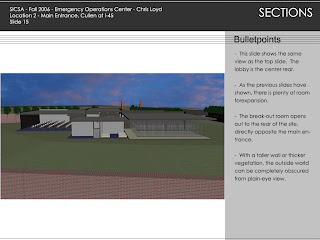Hope you are having a good holiday season thus far. Here's the low-down.
Just finished my final presentaton on my Emergency Operations Center. Here's an image from the presentation:

In other news, the FAA has a good FAQ on "Commercial Space Topics". Here are some quotes:
Why isn't NASA, as the U.S. space agency, responsible for the safety and success of commercial space transportation?
NASA is a research and development agency of the federal government, and as such neither operates nor regulates the commercial space transportation industry. The regulatory responsibility for the industry falls to the Federal Aviation Administration, which is a regulatory agency. NASA does, however, often use launch satellites and spacecraft on vehicles developed by private companies.
What does a commercial space launch cost a launch customer?
Launch prices depend on the vehicle being used for the launch, which is determined by the size and destination of the payload being launched. Generally, the larger the payload, the larger the vehicle required, and thus the greater the price. Commercial launches are priced at as little as $8 million for a flight on the Russian START launch vehicle and as much as $180 million for a European Ariane 5 rocket.
So, what are some options?
Russian START launch vehicle: 400 kg payload to LEO. Cost: $8m
Ariane 5 rocket: 17,500 kg payload to LEO. Cost: $180m.
Space Shuttle: 21,000 kg - 24,900 kg to LEO. Cost: $450m.
The payload figures come from The Encyclopedia of Astrobiology, Astronomy, and Spaceflight. Costs came from the FAA for the Russian START and Ariane 5. Costs for the Shuttle come from NASA.
Crunching some numbers, the most cost effective of these are the Ariane 5, costing $10,285/kg, followed by the Shuttle, for at least $18,000/kg, and finally Russian START, costing a Shuttle-like $20,000/kg to launch 400 kg.

